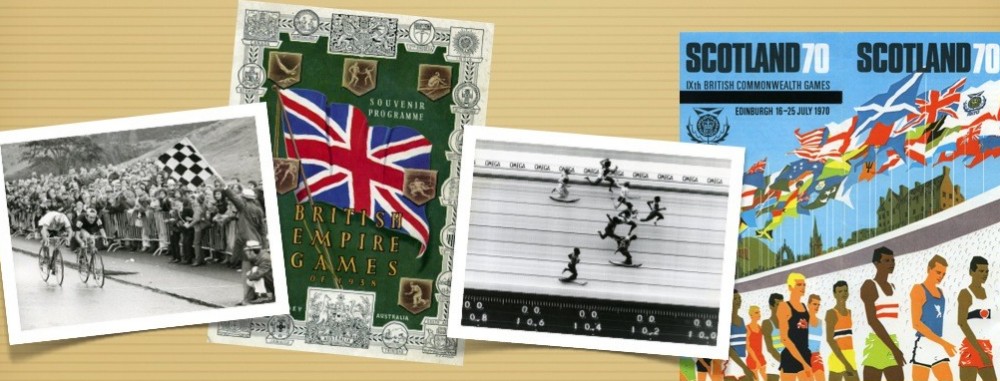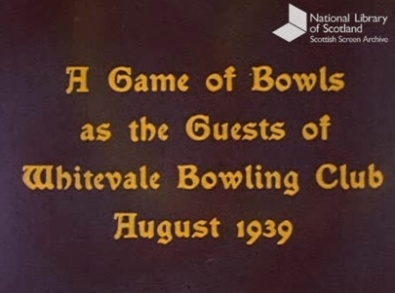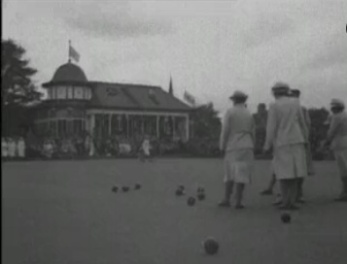Bowls is known to have been played in Glasgow since the 17th Century, and the Thomas Taylor Company, formed in 1770, is the world’s oldest bowls manufacturer. As Ged O’Brian in Played in Glasgow makes clear, the Glasgow public turned its public spaces conserved by its Victorian aldermen in to new sporting facilities from which new sports practices and sports clubs could emerge. This was particularly the case with bowls, which flourished in the south side of the city as its new (increasingly middle-class) population grew through the late-19th in to the early 20th centuries extending the city southward in to Pollokshields, Cathcart, Mount Florida, Shawlands and Langside. The popularity of bowls, Ged Obrien notes, became so great that by 1929 there were 33 private and 11 public greens within a 1.25 mile radius.
FILM LINK: ‘A Games of Bowls’ (1939), Scottish Screen Archive
A rare amateur colour film from 1939 shows a number of bowling matches at Glasgow bowling greens. The first, Whitevale, is one of the oldest bowling clubs in the world, formed in 1836 in the Dennistoun area of the city and now situated in Whitehill Street (seen in this postcard at theglasgowstory.com). The film provides an insight in to the demographic of participants, predominantly elderly men and women, their attire, the style of bowls being played, all amid the tightly enclosed environ of the bowling green which is situated amongst the high tenements of the Denistoun area. According to O’Brien, the club was famous for having lawyers, policemen and doctors among its membership.
One fascinating feature of the film is the lack of any strict dress code, no ‘whites’ for example, but the men are mainly wearing jackets and ties, common for the age, but looking quite informal at the same time. However one member can be seen wearing plus-fours, which was common sports attire in the late-19th century and Edwardian period, but revealing middle-class eccentricity for the 1930s. The other interesting detail of the film is the way in which the bowlers chase after their bowl, literally at a near-sprint to get up close to the final ‘head’ of bowls at the other end of the rink.
The second sequence, in black and white, shows a match at Kingswood bowling green located in Kingsbrae Avenue adjacent to Hampden Stadium, which was a relatively new club in 1939, having been established in 1928. The film shows women playing bowls who are wearing long summer dresses and hats, are more genteel, and are also shown holding plates of food, presumably prepared for the men of the club. The film shows that women had a place in bowling clubs, which gave them access to recreation and competition. At the same time, the film also reveals heavily gendered roles in such clubs,with women preparing the food and enabling men to occupy themselves in play. These gendered roles continue when the film shows a sequence where play stops for ‘ices’, an alternative to a drink’s break in the hot June sunshine. Visible in the background is Hampden itself. The film also shows the club house, typical of many Glasgow bowling pavilions, long and narrow, which is surrounded by a rockery and formal flower beds to enhance the feeling of being lost on a green urban space.
FILM LINK: British Pathe Newsreel – Seen in Camera (1946)
The newsreel series, Seen in Camera, visits Glasgow to cover the women’s international bowls match for the Eve Trophy between England and Scotland at Bellahouston Bowling Club. Bellahouston Bowling Club was originally located on Paisley Road from 1858. The construction of Glasgow Subway meant it had to move from Clifford Street in 1893. As the description by theglasgowstory.com of a postcard held by the Mitchell Library explains ‘the section which passed beneath the greens was built by “cut and cover”, which involved excavating two deep trenches across the site and then covering over the tunnels formed below’. The new green bounded by Beech Avenue and Manor Road is captured in the British Pathe newsreel.
The post-war newsreel contrasts with the pre-war home movies from Whitevale and Kingswood with all competitors wearing more formal whites. Given the status of the match there is a relatively large crowd, with women seated and men standing behind. In contradistinction to the more informal matchplay in the Kingswood film above, the formal setting of the championships at Bellahouston reveal the respect for women’s bowls, the prestige of the event being the draw for the Pathe cameras. However, the jovial entertainment-driven approach of the newsreel removes any sense of gravitas in the event; we even get sexist references to ‘dumb blondes’ and ‘bowling queens’. Nevertheless, the film is valuable for providing some footage of the beautiful Bellahouston pavilion, the second to be built by the club, which again had to give way to new transport links when it was unfortunately demolished in the early 1980’s during the construction of the M8 motorway. The club moved for a third time to its existing location in the north east corner of Bellahouston Park, just along from House For an Art Lover.


